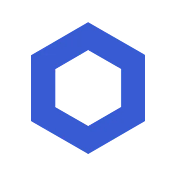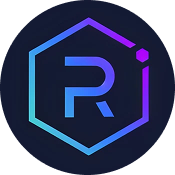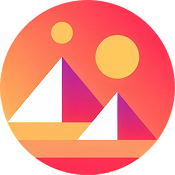When evaluating blockchain projects, it's not just about the hype or market cap; it's about understanding how each platform addresses real-world problems through unique technical architectures. VeChain and Chainlink exemplify this approach, with VeChain focusing on supply chain solutions and enterprise adoption, while Chainlink excels in connecting smart contracts with real-world data. Both have carved out distinctive niches, but how do they compare in terms of technology, utility, and future potential? This comprehensive comparison aims to dissect their core features, use cases, and strategic directions to help crypto enthusiasts and investors make informed decisions.
Short on time? Jump to VeChain vs Chainlink Comparison
Understanding VeChain and Chainlink ?
VeChainThor is a public enterprise blockchain designed to improve supply chain management, product authenticity, and data traceability. Characterized by its energy-efficient Proof of Authority consensus mechanism, VeChain emphasizes scalability and enterprise integration, aiming for mass adoption in real-world applications. Since its inception in 2018, VeChain has achieved significant milestones, including high transaction volumes and strategic partnerships with global brands like Walmart China, emphasizing its focus on practical use cases.
Chainlink, on the other hand, is a decentralized oracle network that connects smart contracts to external data sources, enabling complex, data-driven decentralized applications. Launched in 2017, Chainlink has become the backbone for many DeFi projects by providing secure and tamper-proof external data feeds. Its innovative Cross-Chain Interoperability Protocol (CCIP) further extends its utility, supporting cross-chain communication and enabling a connected blockchain ecosystem. Chainlink’s focus is on fostering trust and data integrity across diverse blockchain environments.
While VeChain’s primary strength lies in enterprise supply chain solutions, Chainlink’s core is in ensuring the reliability of external data for decentralized applications. Both platforms address critical needs in the blockchain space—VeChain with operational efficiency, and Chainlink with data authenticity—making them complementary yet distinct in their missions.
Understanding their technical underpinnings is essential. VeChain’s governance model relies on Authority Masternodes, which are vetted entities that produce blocks, ensuring a controlled and secure environment suitable for enterprise use. Conversely, Chainlink operates via a network of independent oracles that aggregate and verify data from multiple sources, emphasizing decentralization and security. Each approach reflects their targeted applications and strategic visions for blockchain utility.
Key Differences Between VeChain and Chainlink
Primary Use Cases
- VeChain: VeChain specializes in supply chain management, product traceability, and authentication, aiming to enhance transparency and reduce fraud across industries such as luxury goods, food safety, and logistics. Its tailored technical features support enterprise integration, making it ideal for organizations seeking operational efficiencies and compliance.
- Chainlink: Chainlink primarily provides secure external data feeds to smart contracts, enabling DeFi applications, asset tokenization, and cross-chain interoperability. Its focus is on data integrity and connectivity, supporting the development of complex decentralized applications that require reliable real-world information.
Consensus Mechanism
- VeChain: VeChain utilizes Proof of Authority (PoA), which relies on a limited number of vetted Authority Masternodes. This model ensures high throughput and security suitable for enterprise use but sacrifices some decentralization for performance and trustworthiness.
- Chainlink: Chainlink employs a decentralized oracle network where multiple independent oracles verify and aggregate data, ensuring tamper-proof inputs for smart contracts. This architecture emphasizes decentralization and security over raw speed.
Target Audience
- VeChain: VeChain is ideal for enterprises and supply chain stakeholders seeking to digitize and authenticate physical goods, improve operational transparency, and reduce counterfeit risks. Its enterprise-ready features appeal to large corporations and regulators.
- Chainlink: Chainlink targets developers, DeFi projects, and blockchain ecosystems that require secure, reliable external data. Its protocol is essential for anyone building complex smart contracts dependent on real-world information and cross-chain interactions.
Technical Architecture
- VeChain: VeChain’s architecture builds on Ethereum’s foundation but incorporates a Proof of Authority consensus, governance via Authority Masternodes, and tailored tools for enterprise adoption. Its blockchain is optimized for speed, energy efficiency, and regulatory compliance.
- Chainlink: Chainlink’s architecture consists of a decentralized network of oracles that fetch, verify, and deliver data to smart contracts. Its Cross-Chain Interoperability Protocol (CCIP) enables communication across different blockchains, fostering an interconnected ecosystem.
Energy Consumption
- VeChain: VeChain operates with minimal energy consumption, consuming only 0.04% of what traditional blockchains do, thanks to its PoA consensus. This makes it sustainable and suitable for large-scale deployment.
- Chainlink: Chainlink’s oracle network is designed to be scalable and secure but does not have a direct measure of energy consumption since it’s an off-chain infrastructure supporting on-chain smart contracts.
VeChain vs Chainlink Comparison
| Feature | ✅ VeChain | ✅ Chainlink |
|---|---|---|
| Core Functionality | Enterprise supply chain solutions, product authenticity, logistics | Decentralized oracles, data feeds, cross-chain interoperability |
| Consensus Mechanism | Proof of Authority (PoA) | Decentralized oracle network |
| Main Use Cases | Supply chain management, product verification, food safety | DeFi, asset tokenization, cross-chain communication |
| Target User | Businesses, supply chain operators, regulators | Developers, DeFi projects, blockchain ecosystems |
| Energy Efficiency | Highly energy-efficient (0.04% of others) | Variable, depends on oracle infrastructure |
Ideal For
Choose VeChain: VeChain is ideal for enterprises and organizations aiming to enhance supply chain transparency, product authenticity, and operational efficiency.
Choose Chainlink: Chainlink is best suited for developers and blockchain projects requiring reliable external data, cross-chain integration, and advanced decentralized applications.
Conclusion: VeChain vs Chainlink
VeChain and Chainlink serve distinct yet vital roles within the blockchain ecosystem. VeChain’s enterprise-focused platform shines in supply chain management, offering scalable, energy-efficient solutions that facilitate real-world adoption. Its governance model and tailored features make it a compelling choice for businesses seeking transparency and efficiency in physical asset tracking. Conversely, Chainlink’s decentralized oracle network is the backbone for smart contract interoperability and data integrity, enabling a broad spectrum of decentralized applications, especially within DeFi and cross-chain environments. Its focus on security and connectivity makes it indispensable for developers building complex, data-dependent blockchain solutions.
Ultimately, the decision to favor VeChain or Chainlink depends on your specific needs: operational transparency and physical asset management or secure data connectivity and cross-chain functionality. Both projects exemplify innovative solutions that push blockchain utility beyond simple transactions, shaping a future where enterprise and decentralized applications coexist seamlessly. For investors and enthusiasts, understanding their core strengths and strategic visions provides a clearer path to participating in this evolving digital landscape.






